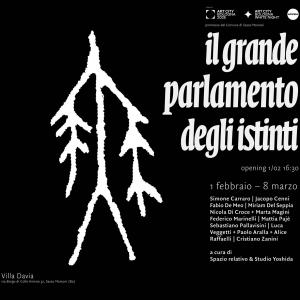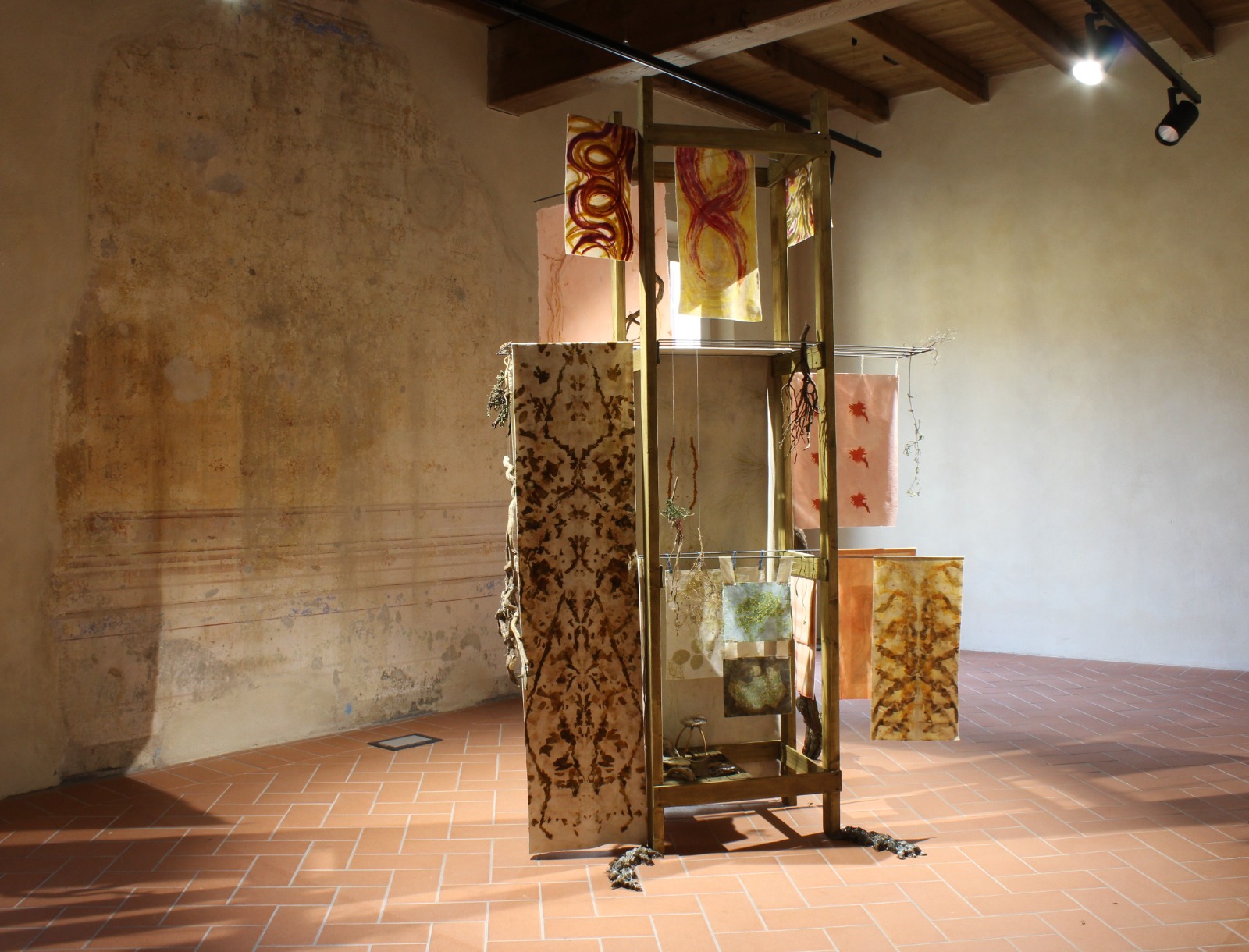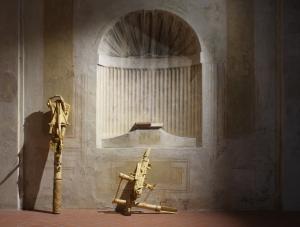The exhibition Il grande parlamento degli istinti, curated by Spazio Relativo and Studio Yoshida, opens to the public on Saturday 1 February, preceded by several performances
Retracing the ritual dimension seems to us an urgent response to the vicissitudes of this era.”
— Iside Calcagnile
SASSO MARCONI, ITALY, January 29, 2025 / EINPresswire.com / -- The exhibition Il grande parlamento degli istinti, curated by Spazio Relativo and Studio Yoshida, opens to the public on Saturday, February 1st, preceded by several performances. The group show is part of the ART CITY Bologna 2025 program within Artefiera and will be open until March 8th, transforming the spaces of the
seventeenth-century Villa Davia, the oratory of Sant'Antonio da Padova and the Salone delle Decorazioni into a stage for reflection on the relationship between art, ritual and instinct.Rooted in the theories of ethologist Konrad Lorenz, who studied the dynamics of aggression and ritualizations as mechanisms of social regulation in animal species, the exhibition questions the human need to construct codified and symbolic gestures, capable of balancing deep and contradictory impulses. What is aggression – Lorenz asks in his famous 1962 essay of the same name – an instinct or a learned behavior? Is there a difference between aggression in humans and in other animals? The great parliament of instincts is thus configured as a transdisciplinary experiment, an observatory that reflects on the capacity of contemporary art to present itself as a ritual device.
The artists and the works: a cartography of ritual
The exhibition The great parliament of instincts maps a new cartography of ritual, as if it were a device of social regulation, an intrinsic necessity of the human condition.
Fabio De Meo, with Formiche, creates, in a canvas with a monumental pictorial surface of 48 square meters, the organization of ants, highlighting their social and military strategies as a disturbing metaphor of the human dynamics of domination and survival. English: The tension between construction and dissolution emerges forcefully in the works of Cristiano Zanini, who models papier-mâché into evocative forms of tools, including weapons and ritual utensils, suggesting an ancestral dialogue between the body and the object.
The biological and alchemical dimension of ritual emerges with particular intensity in the work of Miriam Del Seppia, Processes of Unstable Chemistry, where time and transformation are investigated through natural dyes and unstable chemical processes, restoring a new way of making the world, starting from an environment.
Sebastiano Pallavisini, with Gulasch, merges different animal species into a single hybrid image, suggesting biological chaos and the violence of primordial instinct, while Mattia Pajè, with Mutual Understanding, engraves symbolic scenes and figures on gilded brass plates that recall the Pioneer Plaques, effigies on plaques sent into space by NASA in 1972 and 73, which had the function of illustrating to the extraterrestrial world our passage on Earth.
The reflection on the community value of narration is manifested in the canvases of the series L'anonimo lunario cantato by Simone Carraro, who recovers the figure of the storyteller, investigating the unifying role of the oral word.
Federico Marinelli - finally - investigates the relationship between memory and truth through a painting that makes pictorial rituality a key to the opening of a dimension of the imaginary, completing a stratified investigation.
Site-specific performance and research: the body, the voice, the space
The key element of the exhibition is the performative dimension, which transforms Villa Davia and the surrounding spaces into an expanded theater of ritual action. During the vernissage, the public will be involved in a series of activations that reflect on the corporeality and the sound memory of the ritual.
English: The investigation into sound memory and the voice as a ritual element finds one of its most evocative expressions in Rappresentazione by Luca Veggetti, Paolo Aralla and Alice Raffaelli, a performance that is nourished by the recording of the voice of Francesco Leonetti, a long-time collaborator of Pasolini, delivering a monologue full of semantic and emotional stratifications, while Nicola Di Croce and Marta Magini, with the performance-concert Richiamo (sette fosse nel silenzio che i merli si parla), develop and show us a practice of conversation in the wonderful baroque oratory of the Borgo: two bodies are engaged in the act of producing sounds, listening to them, recording them to listen to them again. GLARE by Jacopo Cenni speaks of the incessant search for Truth, the oscillation between the dominion of the Human and the loss of control over light determines the development of the performance.
The program also includes in-depth meetings and workshops: the conference Il rituale nell'opera di Pier Paolo Pasolini, with Roberto Chiesi and Stefano Casi, will offer a reflection on rituality in cinematographic and theatrical language; the interactive visit Explorations, senses and voices in the great parliament of instincts is the result of a collaboration between philosophers: Passeggiate Filosofiche (Gianmaria Beccari), Prisca Amoroso, Gianluca De Fazio and two voices: Teatrino Giullare and Frelen. Experiential workshops led by Moe Yoshida and Iside Calcagnile will investigate the relationship between sign and voice: drawing animal voices. The workshop diBoccainBocca, by Nina Baietta, will stimulate practices of improvisation and sound modulation that question the boundaries between language, sound and song.
Through this complex device of performative and sound activation, The Great Parliament of Instincts does not limit itself to exploring rituality as a theme, but puts it into action, transforming the exhibition into a living organism, in which the boundary between the work and the spectator becomes porous, permeable, traversable. An experience that is not exhausted in the act of exhibiting, but which aims to leave a mark, an echo, a call destined to reverberate beyond the limits of space and time of the event.
The exhibition stands out for its ability to restore an experiential and immersive dimension to artistic practice, inviting the spectator not only to observe, but to actively participate in a process of perceptive transformation. Through the plurality of media and the tension between memory, instinct and language, the project curated by Moe Yoshida and Iside Calcagnile offers a reflection on rituality that is not nostalgia for an archaic past, but an attempt to reactivate, in the present, a profoundly human need: that of sharing signs, gestures and narratives that transcend the everyday and open spaces of collective experience. A parliament of instincts, therefore, in which art becomes a tool for negotiation, conflict and dialogue between order and chaos, between structure and impulse, between form and becoming.




No comments:
Post a Comment